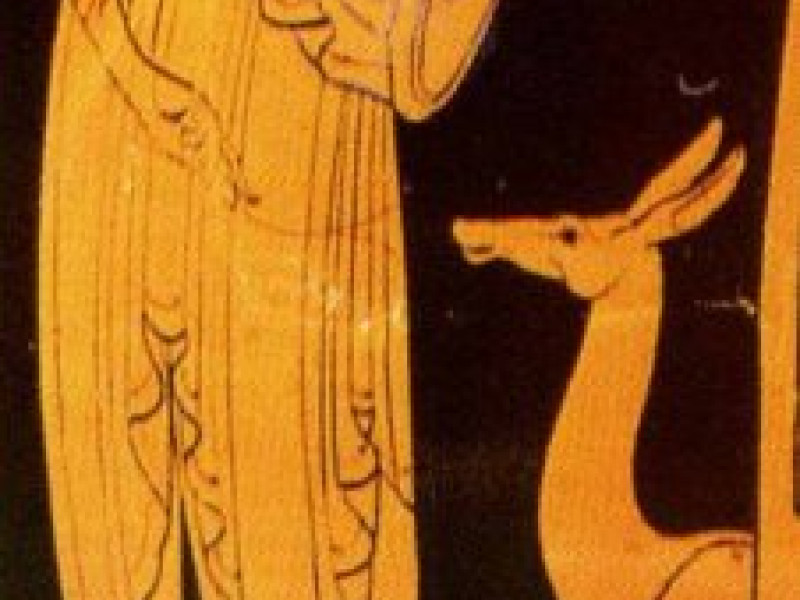Folly of Niobe
Here is a myth that shows how the gods would punish the children for their parent's arrogance and impiety. Apollodorus and Ovid both wrote the story of Niobe (Νιόβη) and her children. However, Ovid provided a lot more details.
Niobe was the daughter of Tantalus, the king punished by the Olympians for killing his own son, and trying to serve his son's flesh to the gods. When Niobe married Amphion, the brother of Zethus and co-ruler of Thebes, it was expected that Niobe would have a happier fate. However, the Fates had decreed differently.
Niobe bore seven sons and seven daughters to Amphion, and her children were known as the Niobids. They numbered from six to ten and the names varied, depending on the authors. So I have decided that I won't bother with giving you the names of Niobe's children.
Any mother would be proud of giving birth to so many beautiful children. However, Niobe, through pride and arrogance, became scornful and boastful, particularly against the gods. Her children would pay the ultimate price for her boasting and impiety.
Leto and her children became the object of her scorn. Niobe came to the temple of Leto, claiming that as a mother she had produced six more sons and six more daughters than Leto, while Leto was only a mother of twins. Niobe called upon the Thebans that they should stop worshipping and sacrificing to Leto; instead the Thebans should worship her and her own children. Her sons grew to be handsome and strong, young men, while her daughters were all beautiful.
Leto, hearing Niobe's disdainful boast, called upon her children to avenge the insult and dishonour that the Theban queen had levelled against them. Apollo and Artemis armed themselves with their silver bows and quiverful of deadly arrows, and flew to Thebes and punish the reckless queen.
One by one, Apollo killed Niobe's sons with his arrows. When news reached their parents of their death, Amphion committed suicide, because he found his grief unbearable.
Niobe was racked with sorrow over their death, yet she refused to yield to the goddess. Niobe defiantly boasted that she outstripped the Titaness.
As Niobe's daughters stood there mourning over their fallen brothers, they were killed one by one, this time from Artemis' silent arrows. When only her last daughter remained, Niobe tried to shield her, asking the goddess to spare her last child. The huntress goddess was relentless, dispatching the girl.
Bereft of all her children, Niobe was distraught and inconsolable. Overwhelming grief displaced her pride and arrogance. Niobe was transformed into stone, like a marble statue, but she continued to weep for her children. A whirlwind carried the stone across the sea, back to the country of her birth. Niobe was set on the mountaintop.
One or two of her children might have survived. Possibly Chloris (Meliboea), the wife of Neleus and mother of Nestor, escaped the fate of her brothers and sisters, since she was living in Pylus, Messenia.
Related Information
Name
Niobe, Νιόβη.
Niobids – Children of Niobe.
Sources
Library was written by Apollodorus.
Metamorphoses was written by Ovid.
Catalogues of Women was possibly written by Hesiod.
Fabulae was written by Hyginus.
Related Articles
By Jimmy Joe





